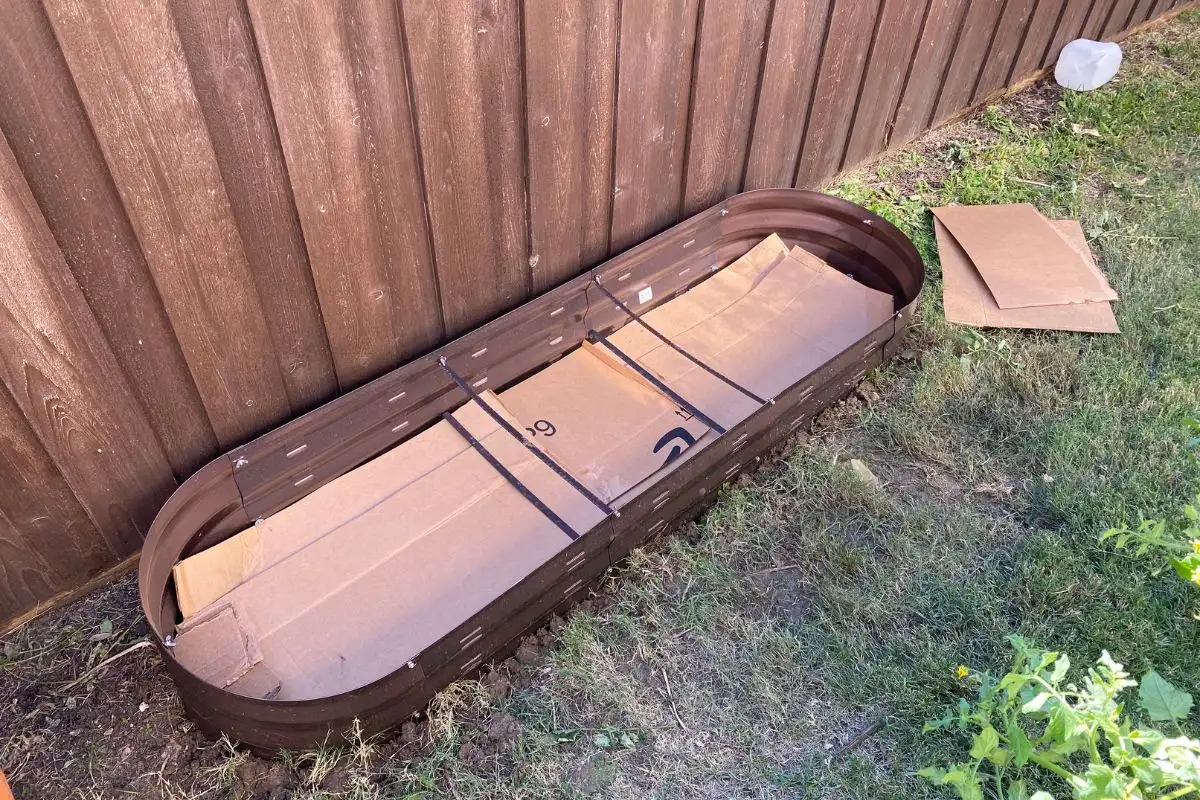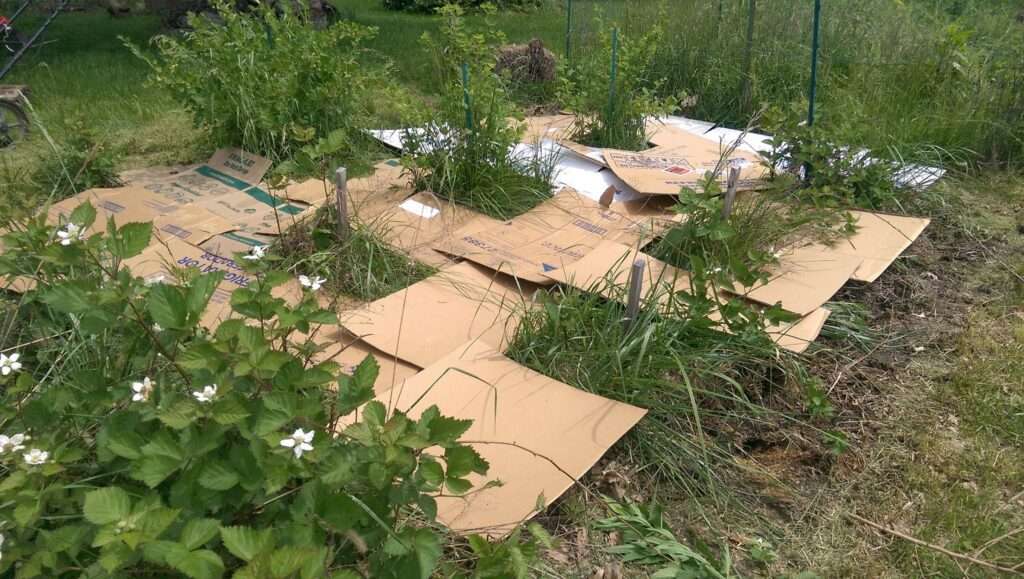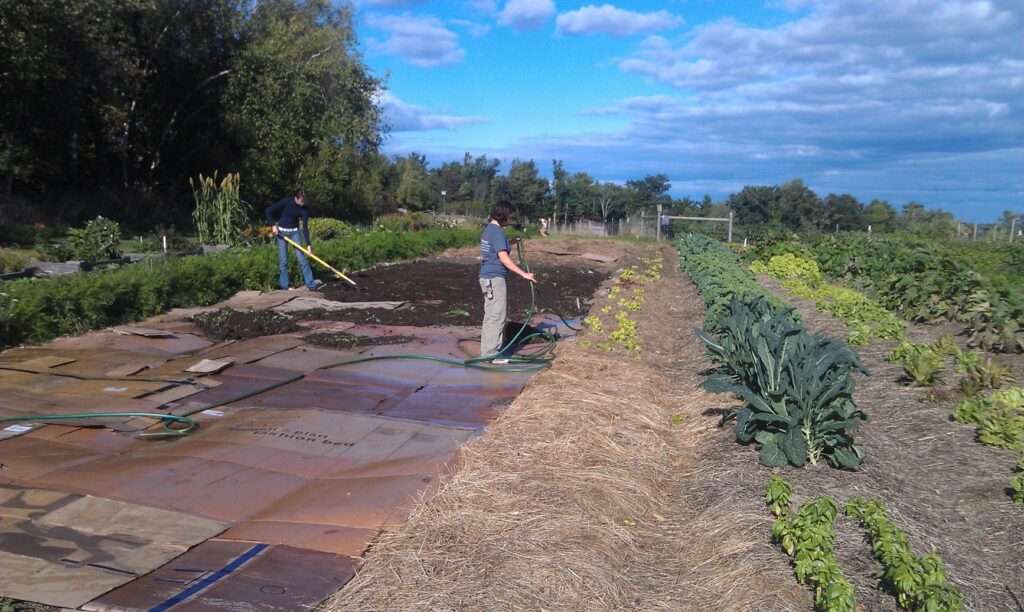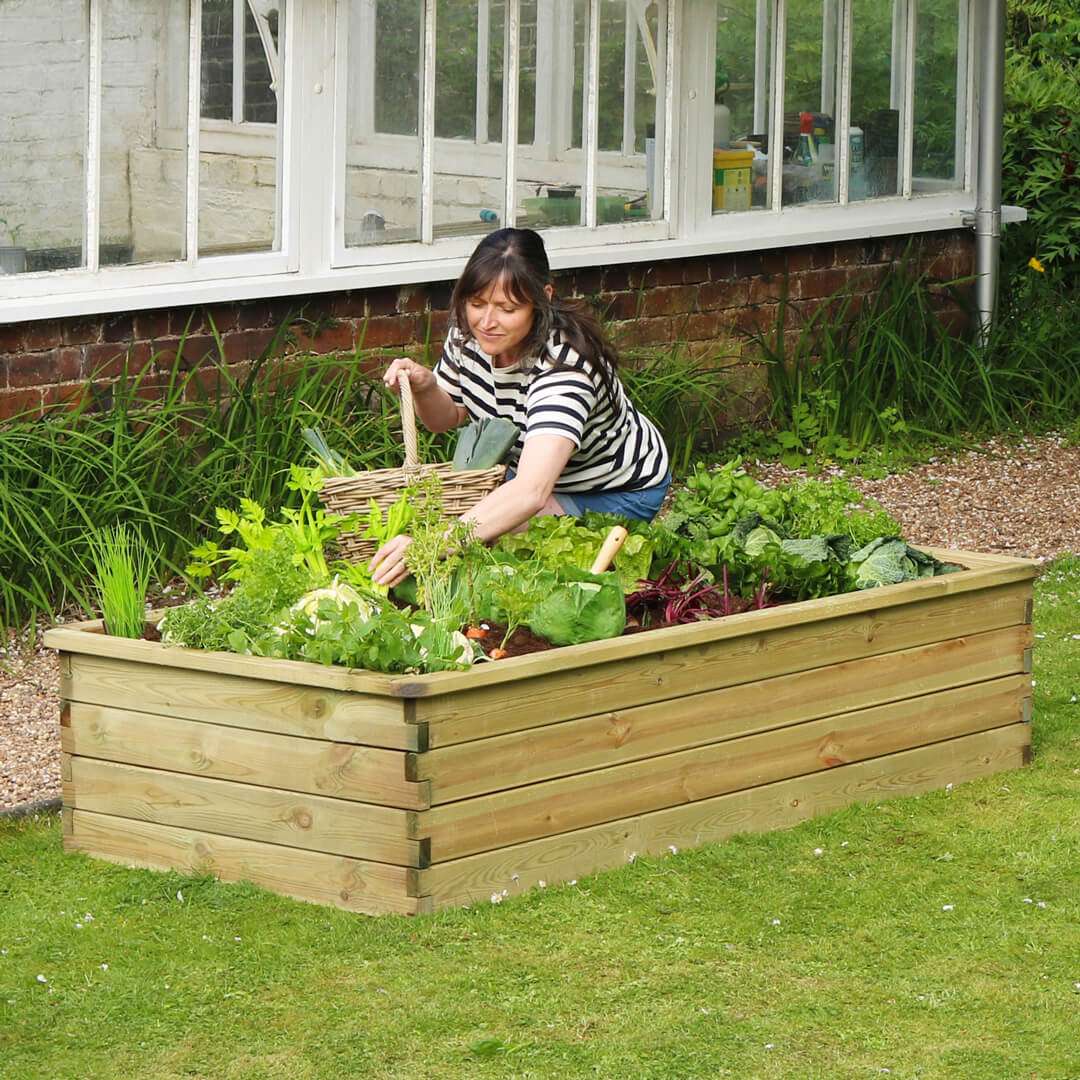When it comes to raised garden beds, you may have heard some people recommending the use of cardboard underneath. In this article, we’ll discuss whether or not it’s necessary to use cardboard under your raised garden bed. We’ll explore the benefits and drawbacks, as well as alternative options. By the end, you’ll have a better understanding of whether or not cardboard is a good choice for your garden bed.
Should I Use Cardboard Under My Raised Garden Bed?
Introduction
If you are considering starting a raised garden bed, you may have come across the suggestion of using cardboard as a bottom layer. But is this really necessary? In this article, we will explore the benefits, methods of preparation, installation tips, alternatives, common myths, experiences, and impact of using cardboard under a raised garden bed. By the end, you will be able to make an informed decision about whether cardboard is the right choice for your gardening needs.
Benefits of Using Cardboard Under a Raised Garden Bed
Improves Soil Quality
One of the primary benefits of using cardboard under a raised garden bed is its ability to improve soil quality. As the cardboard decomposes, it adds organic matter to the soil, enhancing its structure and nutrient content. This can lead to healthier and more productive plants.
Suppresses Weed Growth
Weeds can be a nuisance in any garden, but by placing cardboard under your raised bed, you can effectively suppress weed growth. The cardboard acts as a barrier, preventing sunlight from reaching weed seeds and inhibiting their germination. This means less time spent weeding and more time enjoying your garden.
Prevents Soil Erosion
Raised garden beds are often built on sloped terrain, making them susceptible to soil erosion. By using cardboard as a bottom layer, you create a barrier that helps prevent soil from washing away during heavy rain or watering. This ensures that your plants’ roots remain secure and that valuable topsoil is retained.
Retains Moisture
Maintaining proper moisture levels in the soil is crucial for the health of your plants. Cardboard can help retain moisture by acting as a natural mulch. It prevents water from evaporating too quickly, allowing your plants to access the moisture they need for optimal growth. This can be particularly beneficial in dry climates or during periods of drought.
Enhances Drainage
While cardboard helps retain moisture, it also promotes good drainage in raised garden beds. Its fibrous texture allows excess water to flow through, preventing waterlogging and the risk of root rot. This balance between moisture retention and drainage is essential for ensuring that your plants receive the right amount of water.

Methods of Preparing Cardboard for a Raised Garden Bed
Selecting the Right Type of Cardboard
When using cardboard under a raised garden bed, it is important to choose the right type of cardboard. Opt for corrugated cardboard as it is thicker and more durable than other types. Avoid using cardboard with glossy surfaces or heavy adhesives, as these may not break down as effectively and could potentially introduce unwanted chemicals into the soil.
Removing Adhesives and Glossy Surfaces
Before placing cardboard in your raised garden bed, it is essential to remove any adhesives or glossy surfaces that may hinder decomposition. Simply peel off any tape, stickers, or labels and scrape off any glossy coatings. This will ensure that the cardboard can break down naturally over time and integrate into the soil.
Cutting and Shaping the Cardboard
To fit the cardboard into your raised garden bed, you may need to cut and shape it accordingly. Measure the dimensions of your bed and use scissors or a box cutter to trim the cardboard to the desired size. Cut slits in the cardboard to accommodate any plants that may be placed directly into the bed.
Wetting and Layering the Cardboard
Before installing the cardboard in your raised garden bed, it is helpful to wet it thoroughly. This will aid in its decomposition process and also prevent it from blowing away during installation. Layer the wet cardboard directly on top of the ground, ensuring complete coverage. Overlap the edges to prevent weed growth and to create a barrier against pests.
Tips for Installing Cardboard Under a Raised Garden Bed
Clearing the Area
Before installing cardboard under your raised garden bed, it is important to clear the area of any debris, rocks, or weeds. This will provide a clean and level surface for the installation and ensure that the cardboard lies flat and secure.
Leveling the Ground
For optimal stability, it is crucial to level the ground before placing the cardboard in your raised garden bed. Use a rake or garden tool to smooth out any uneven areas and create a flat surface. This will prevent the cardboard from shifting or sagging once the soil is added.
Placing and Securing the Cardboard
Once the ground is level, carefully place the wet cardboard in the bottom of your raised garden bed. Ensure that the entire surface is covered, leaving no gaps or exposed areas. To secure the cardboard, you can use garden staples or heavy stones placed around the edges. This will keep the cardboard in place during planting and watering.
Filling the Bed with Soil
After the cardboard is installed, it is time to fill your raised garden bed with soil. Add a layer of compost or organic matter on top of the cardboard to provide nutrients for your plants. Then, fill the bed with a well-draining soil mix, ensuring that the roots of your plants will have the ideal conditions for growth.

Considerations for Not Using Cardboard Under a Raised Garden Bed
While cardboard may offer numerous benefits, there are some considerations to keep in mind before using it under a raised garden bed.
Allowing Direct Soil Contact
By not using cardboard, you allow direct contact between the soil in the raised bed and the ground beneath. This allows for natural interaction and exchange of nutrients and microorganisms between the two. In certain situations or if you prefer a more natural approach, this may be a better choice.
Facilitating Intensive Root Growth
Some plants, particularly those with deep root systems, may benefit from being able to extend their roots into the ground below the raised bed. By not using cardboard, you allow for greater root exploration and potential for increased plant growth and productivity.
Promoting Beneficial Soil Microorganisms
The soil is teeming with beneficial microorganisms that play a vital role in plant health. Without cardboard acting as a barrier, these microorganisms can freely move between the raised bed and the ground, contributing to a more diverse and thriving soil ecosystem.
Maintaining Natural Soil Composition
By not using cardboard, you maintain the natural composition and structure of the soil in your raised bed. This can be particularly important if your garden bed is filled with soil that is already rich in organic matter and nutrients.
Alternatives to Using Cardboard Under a Raised Garden Bed
If you decide not to use cardboard, there are alternative options to consider for the bottom layer of your raised garden bed.
Using Landscape Fabric
Landscape fabric is a synthetic material that can be used as an alternative to cardboard. It offers similar benefits, such as weed suppression and moisture retention. However, it is important to choose a permeable fabric that allows for airflow and water drainage.
Applying Mulch
Mulching the bottom of a raised garden bed is another alternative to using cardboard. Organic mulch, such as wood chips or straw, can help suppress weeds, retain moisture, and enhance soil quality. This method is particularly effective if you have access to an abundant supply of organic materials.
Incorporating Compost
If you have a ready supply of compost, you can choose to incorporate it directly into the bottom of your raised garden bed. This will not only enrich the soil but also provide immediate access to nutrients for your plants. However, it is important to ensure that the compost is well-composted and free of any weed seeds.

Common Myths About Using Cardboard Under a Raised Garden Bed
There are several myths surrounding the use of cardboard under a raised garden bed. Let’s debunk some of these misconceptions.
Cardboard Attracts Pests
Contrary to popular belief, cardboard does not attract pests. In fact, the layer of cardboard acts as a physical barrier, preventing pests from burrowing into your raised garden bed from below. As long as the cardboard is properly installed and secured, there should be no increased risk of pest infestation.
Cardboard Causes Soil Contamination
Another myth is that cardboard can contaminate the soil with chemicals. While it is important to choose cardboard without heavy adhesives or glossy surfaces, studies have shown that the trace amounts of chemicals present in cardboard are unlikely to pose any significant risk to plants or humans.
Cardboard Hinders Drainage
Some gardeners worry that cardboard may hinder drainage in a raised garden bed. However, when properly wetted and layered, cardboard actually promotes good drainage by allowing excess water to flow through. The fibrous texture of the cardboard acts as a filter, ensuring that the soil remains well-drained.
Experiences and Testimonials on Using Cardboard Under a Raised Garden Bed
To provide further insight into the use of cardboard under a raised garden bed, let’s explore some experiences, challenges, and expert opinions.
Success Stories from Gardeners
Many gardeners have reported positive experiences using cardboard in their raised garden beds. They have found that it effectively suppresses weeds, improves soil quality, and retains moisture. Several individuals have also noted increased plant growth and overall garden productivity.
Challenges and Lessons Learned
While most gardeners have had success with using cardboard, there have been some challenges reported. These include difficulty in securing the cardboard to prevent shifting, as well as finding that certain types of cardboard take longer to decompose than expected. However, these challenges can be overcome by using proper installation techniques and selecting the right type of cardboard.
Expert Opinions and Recommendations
Experts generally agree that using cardboard as a bottom layer in a raised garden bed can provide numerous benefits. Cardboard creates a barrier against weeds and pests, enhances soil quality, retains moisture, and promotes good drainage. However, they also emphasize the importance of selecting the right type of cardboard and properly preparing and installing it for optimal results.

Comparing Different Types of Raised Garden Bed Bottom Layers
To better understand the advantages and disadvantages of using cardboard, let’s compare it to other common bottom layer options.
Cardboard vs. Landscape Fabric
Both cardboard and landscape fabric offer weed suppression and moisture retention benefits. However, cardboard is generally considered more eco-friendly and cost-effective, as it is biodegradable and can be easily sourced. Landscape fabric may be more durable, but it is non-biodegradable and may need to be replaced over time.
Cardboard vs. Newspaper
Newspaper is another alternative to cardboard for a raised garden bed bottom layer. While it can offer similar benefits, such as weed suppression, it is generally less durable and may decompose more quickly. Additionally, newspaper may contain colored inks or potentially harmful substances, so it is important to use it with caution.
Cardboard vs. Plastic Sheeting
Plastic sheeting is often used as a barrier in raised garden beds. While it provides effective weed control, it may not allow for proper drainage and can create a barrier that limits the movement of beneficial soil organisms. Additionally, plastic sheeting is non-biodegradable and can have a negative impact on the environment.
Factors to Consider Before Using Cardboard Under a Raised Garden Bed
Before deciding whether to use cardboard under your raised garden bed, it is essential to consider the following factors:
Soil Composition
The composition of your existing soil and the needs of your plants should be taken into account. If your soil is already fertile and well-draining, you may not require the additional benefits that cardboard provides. Understanding the nutrient and drainage requirements of your plants can help you determine if cardboard is necessary.
Climate and Weather Conditions
Consider the climate and weather conditions in your area. If you live in a region with heavy rainfall, cardboard can help prevent soil erosion and promote better drainage. On the other hand, if you have a drier climate, the moisture retention benefits of cardboard may be more advantageous.
Planting Goals
Consider your specific gardening goals and the types of plants you intend to grow. Some plants, such as vegetables or annual flowers, may benefit greatly from the added nutrients and weed suppression provided by cardboard. However, certain perennial plants or those with deep root systems may prefer direct access to the ground below.
Long-Term Maintenance
Think about the long-term maintenance of your raised garden bed. While cardboard can provide immediate benefits, it will eventually decompose and need to be replaced. Consider whether you are willing to periodically remove and replace the cardboard as part of your garden bed maintenance routine.

Impact of Using Cardboard Under a Raised Garden Bed on Plant Health
Using cardboard as a bottom layer in a raised garden bed can have a significant impact on the health and growth of your plants.
Improved Nutrient Availability
As the cardboard decomposes, it releases nutrients into the soil, making them more accessible to your plants. This can lead to improved plant growth and overall health. Additionally, the breakdown of organic matter creates a favorable environment for beneficial soil organisms, further enhancing nutrient availability.
Protection from Weeds and Pests
The use of cardboard as a weed barrier helps prevent competition for resources and reduces the need for chemical herbicides. Its physical barrier also deters pests from burrowing into the soil and causing damage to plant roots.
Optimal Drainage and Moisture Retention
Cardboard’s fibrous texture allows for good drainage, preventing waterlogged soil and the risk of root rot. At the same time, it helps retain moisture by reducing evaporation, ensuring that your plants have consistent access to water.
Enhanced Root Development
By providing a well-structured base, cardboard promotes healthy root development. The improved soil quality, better drainage, and increased nutrient availability all contribute to stronger and more extensive root systems. This, in turn, leads to healthier and more productive plants.
Case Study: Cardboard Under My Raised Garden Bed
To gain a firsthand perspective, let’s explore a personal account of using cardboard under a raised garden bed.
Personal Account of Using Cardboard
“As an avid gardener, I decided to try using cardboard as a bottom layer in my raised garden bed. I carefully prepared the cardboard by removing any adhesives and glossy surfaces, as recommended. After wetting the cardboard and layering it in the bed, I filled the rest with a mixture of compost and well-draining soil.”
Benefits and Challenges Faced
“I quickly noticed the benefits of using cardboard in my raised garden bed. Weeds were significantly reduced compared to previous years, and the soil quality seemed to have improved. Watering was more effective, as the cardboard retained moisture without the risk of waterlogging. However, I did face some challenges in securing the cardboard initially, and some types took longer to decompose than I expected.”
Comparative Analysis with Other Methods
“Having previously used landscape fabric in another garden bed, I found that cardboard provided similar benefits but was more cost-effective and environmentally friendly. The comparison with plastic sheeting was also clear, as cardboard allowed for better drainage and a healthier soil ecosystem.”
Conclusion
When deciding whether to use cardboard under your raised garden bed, it is essential to weigh the pros and cons and consider your individual circumstances. Cardboard offers numerous benefits, including improved soil quality, weed suppression, prevention of soil erosion, moisture retention, and enhanced drainage. However, it may not be necessary in all situations, and alternatives like landscape fabric, mulch, or compost should be considered. By understanding the impact of using cardboard on plant health and considering various factors, you can make an informed decision that suits your gardening goals. Happy gardening!




